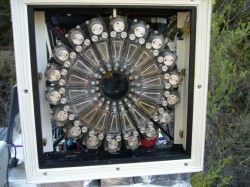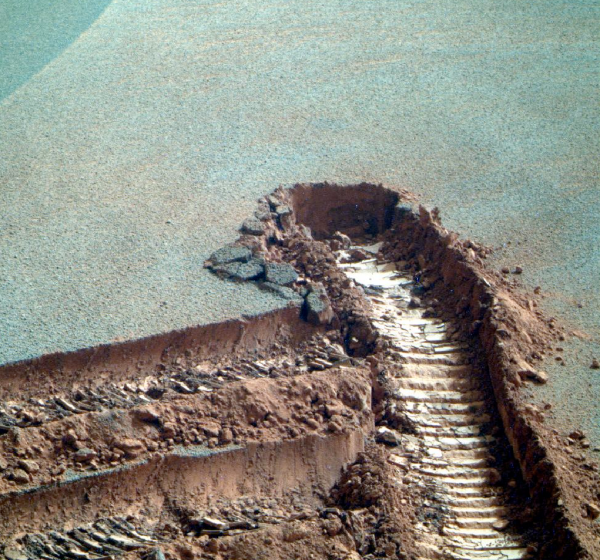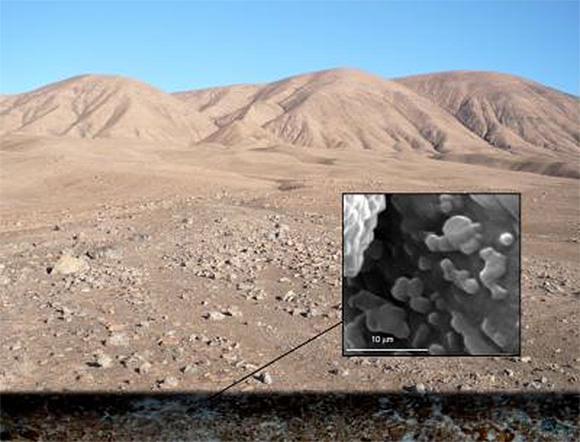[/caption]
Researchers from the Center of Astrobiology (CAB) in Spain and the Catholic University of the North in Chile have found an “oasis” of microorganisms living two meters beneath the arid soil of the Atacama, proving that even on the driest place on Earth, life finds a way.
Chile’s Atacama Desert receives on average less than .01 cm (.004 inches) of rain per year. In some locations rain has not fallen for over 400 years. But even in this harsh environment there is moisture… just enough, at least, for rock salts and other compounds that can absorb any traces of water to support microbial life beneath the surface.
Using a device called SOLID (Signs Of LIfe Detection) developed by CAB, the researchers were able to identify the presence of microorganisms living on thin films of water within the salty subsurface soil.
Even the substrate itself is able to absorb moisture from the air, concentrating it into films only a few microns thick around the salt crystals. This gives the microorganisms everything they need to survive and flourish — two to three meters underground.

At that depth, there is no sunlight and no oxygen, but there is life.
And even when researchers dug to a depth of five meters (a little over 16 feet) and took samples back to a lab, they were able to not only locate microorganisms but also revive them with the addition of a little water.
Of course, the implications for finding life — or at least the remains of its past existence — on Mars is evident. Mars has been shown to have saline deposits in many regions, and the salt is what helps water remain liquid, longer.
“The high concentration of salt has a double effect: it absorbs water between the crystals and lowers the freezing point, so that they can have thin films of water (in brine) at temperatures several degrees below zero, up to minus 20 C,” said Victor Parro, researcher from the Center of Astrobiology (INTA-CSIC, Spain) and coordinator of the study. This is within the temperature range of many regions of Mars, and also anything located several meters below the surface would be well protected from UV radiation from the Sun.
“If there are similar microbes on Mars or remains in similar conditions to the ones we have found in Atacama, we could detect them with instruments like SOLID,” Parro said.
The development of a new version of the SOLID instrument is currently underway for ESA’s ExoMars program.
Read more here on the Science Codex article.


